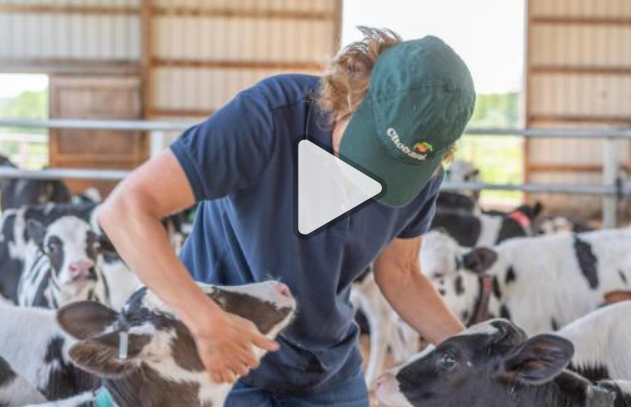Issues Facing US Agriculture-
AG TRENDS FOCUS PAGE
The Dutch are subverting nature again—with floating dairy farms
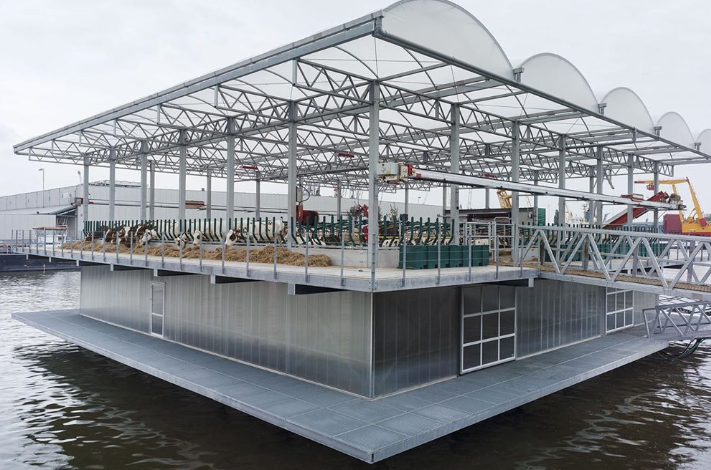
These cows are part of a Dutch experiment to rethink how cities are supplied with dairy products while promoting a sustainable food cycle. The cows are fed with grass from local soccer fields, potato peels discarded by the french fry industry, and leftover bran from area windmills. Those resources are picked up and delivered to The Floating Farm with electric cars.
The cows—a native Dutch breed called Meuse Rhine Issel—are milked by robots, each heifer producing up to 25 liters (6.6 gallons) of milk per day. There are other robots on the island, too, but they’re tasked with the less desirable job of cleaning up manure, which is then recycled back into the neighborhood as fertilizer. Currently, about 23 retail outlets in Rotterdam carry milk from The Floating Farm.
Chobani CEO: America is failing its dairy farmers
Today, as the founder of a yogurt company that takes in a billion pounds of milk each year, we depend on more than 1,000 dairy farms across America, and wolves are the least of their problems. Thanks to record-low milk prices, dropping dairy consumption rates, industry consolidation, global competition and unfair and untrue consumer fears that dairy causes everything from cancer to diabetes, America's dairy farmers are facing their worst crisis since at least the Great Depression. America has lost an average of five dairy farms per day for the last 10 years — close to 19,700 in all — but the dairy depression is never discussed publicly or in the news. Over 90% of America's dairy farms are family-owned, with dairy generating an overall economic impact of more than $628 billion each year. And yet, although the farm bill that passed last year offers financial assistance, there's a lot more Congress can do to help the small dairy farms that create high-quality nutrition for American families.
On the Cotton Farm: Stockpiling and Fearing Big Losses From Trade Fight
Cotton exports to China have tumbled, and the domestic price for the crop has fallen roughly 30% since China slapped retaliatory 25% tariffs on U.S. farm commodities last summer. Stockpiles of U.S. cotton are forecast to be the highest in a decade.
“If China decided it was going to start buying some cotton it would be a game changer,” said Ramey Stiles, a 60-year-old cotton farmer who lives in nearby Marianna, Ark., in Lee County, an hour southwest of Memphis, Tenn.
He and other farmers talking over hamburgers and salads at the country store recently said they are hoping for a swift resolution to the trade spat with China, the world’s biggest importer of cotton.
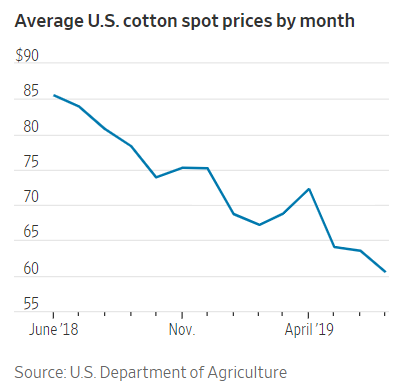
U.S., Guatemala, H-2A program addresses ‘irregular migration’

The U.S. and Guatemala pursuing a program to boost H-2A workers from that country, in an effort to stem what the Department of Homeland Security calls irregular migration patterns.
A registered Foreign Labor Recruiter program would prioritize H-2A visa appointments over non-immigrant categories for Guatemalans, according to a DHS news release. It would also develop and coordinate an “outreach campaign to promote the H-2A program in partnership with Guatemala’s Ministry of Labor, focusing on the recruitment of qualified workers.”
The following web resources and articles have been gathered to explain current changes, challenges or new technologies that can impact the US Agriculture Industry. These types of changes affect farmers and workers in many different states.
Farmers celebrate proposed changes to nation's migrant farmworker program
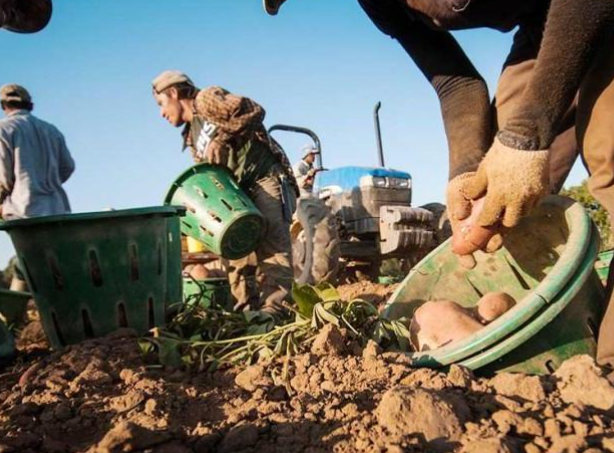
American farmers might be able to import labor from other countries more efficiently under a new proposal to change the U.S. Department of Labor's controversial migrant farmworker program.
The Labor Department announced it will make the changes via a proposed new rule that would amend the nation's current H2-A migrant visa program. The agency will begin accepting public comment on the proposal after it is published in the Federal Register, though it is unclear when that will happen.
A PUSH TO EQUALIZE LABOR LAWS FOR CHILD FARMWORKERS, WHO ARE OFTEN IMMIGRANTS
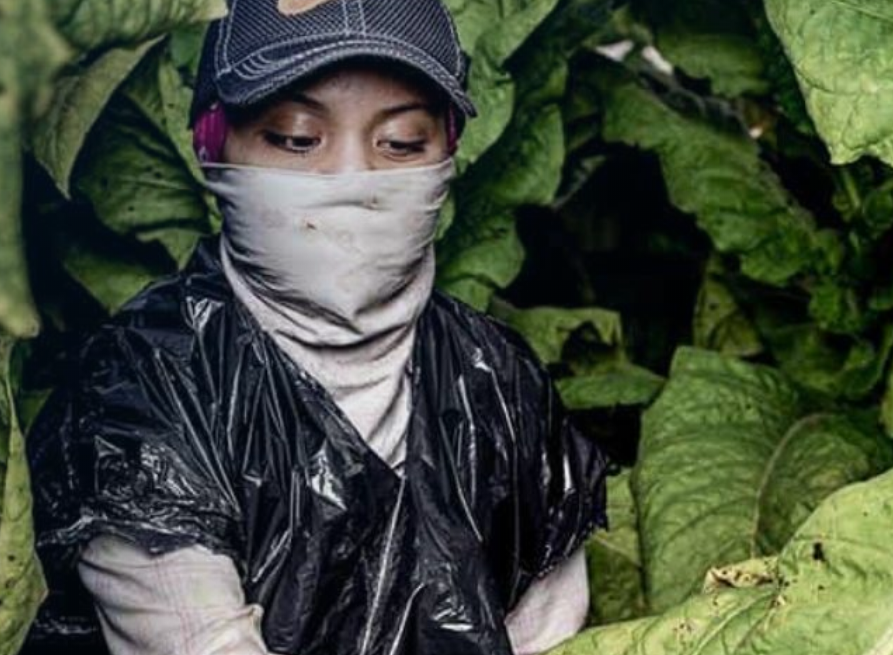
Federal law prohibits minors from working in non-farm industries until they’re 14. But children as young as 12 can be hired to perform farm labor.At a time when immigrants are in the national spotlight, a California congresswoman has reintroduced a bill to strengthen federal protections for children hired to work in agriculture, an industry that relies heavily on migrants from Latin America. The bill tightens labor standards for child farmworkers, whose protections under federal law fall short of those protecting minors working in other industries.
While federal law prohibits minors from working in non-farm industries until they’re 14, for example, children as young as 12 can be hired to perform farm labor. The proposed Children’s Act for Responsible Employment and Farm Safety, or CARE Act, would raise the minimum age to 14. This proposed rule change and others would be incorporated into the Fair Labor Standards Act.
Farm states slammed by double whammy of US-China trade war and immigration woes
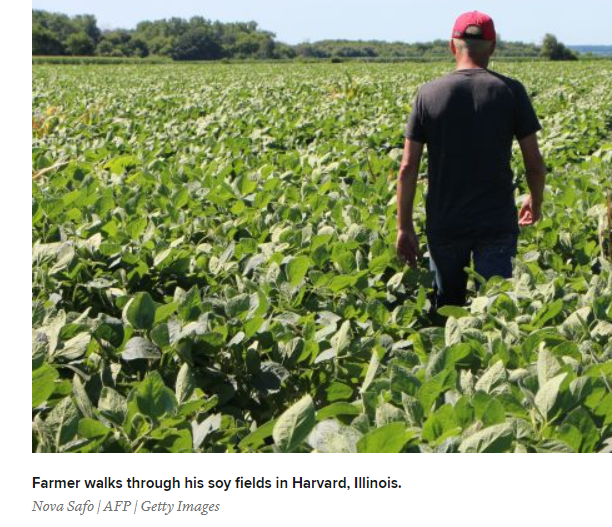
Farm Belt states are great for business. The “I” states — Iowa, Illinois, Indiana— along with Nebraska, Kansas, Minnesota, Missouri, California, Texas and others, are powerhouse food producers. U.S. agriculture typically harvests enough for our own consumption and about 20% more for export.
But the farm economy — never a sure thing — is challenged this year like at no other time in recent history, at least since the mid-1980s. Ironically, the problem this time is agriculture’s amazing productivity in the U.S. and other developed nations. Five straight years of bumper crops have resulted in excess supply, depressing commodity prices and eroding the savings and equity on the balance books.
Add to this extreme weather this spring that has produced massive flooding and significantly delayed most planting, which will mean lower yields this fall. Eventually, this may raise commodity prices, but in the short term it creates a “double whammy”: less to sell at lower prices, resulting in drastically reduced income. Which states are hurt most depends on variables particular to each state. California is impacted most by lack of labor, while Wisconsin suffers worst from bankruptcies and dairy losses, for instance. As the largest soybeans-producing states, Iowa and Illinois invariably are hit hardest on multiple fronts by adverse weather patterns and prolonged trade disputes.
Massive 8,000-mile 'dead zone' could be one of the gulf's largest

Record-breaking Midwest rainfall washed tons of fertilizer and sewage water out to sea, contributing to a devastatingly large patch of polluted water, scientists say.
Just off the coast of Louisiana and Texas where the Mississippi River empties, the ocean is dying. The cyclical event known as the dead zone occurs every year, but scientists predict that this year's could be one of the largest in recorded history.
